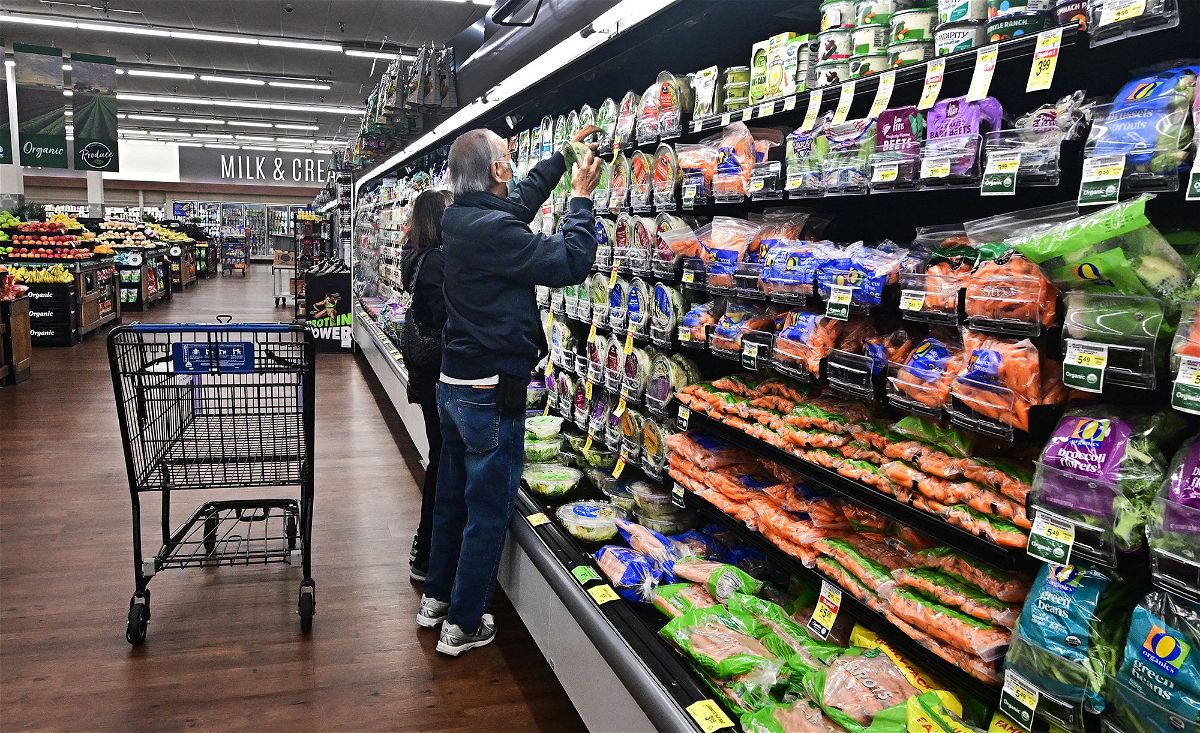US prices didn’t rise last month for the first time since November

Originally Published: 28 JUN 24 08:34 ET
Updated: 28 JUN 24 10:45 ET
By Alicia Wallace, CNN
(CNN) — Prices in the US didn’t rise in May, lending a welcome reprieve to cost-wary Americans and helping to bring inflation even closer to normal levels.
The Personal Consumption Expenditures price index — a closely watched inflation gauge that the Federal Reserve uses for its 2% target — was unchanged from April and slowed to 2.6% for the 12 months ended in May from 2.7% the month before, according to Commerce Department data released Friday.
It’s the first time since November that prices didn’t increase on a monthly basis.
Cheaper prices at the pump certainly helped (energy prices were down 2.1% for the month) and falling goods prices (down 0.4%) helped to slow overall inflation, according to the report. Food prices increased just 0.1%.
Even when taking volatile food and energy prices out of the equation, the downward trajectory was clear: The core PCE price index showed prices ticking up just 0.1% for the month, the slowest pace since November, and pulling the annual rate down to a fresh three-year low of 2.6% from 2.8%.
“Inflationary pressures are easing overall, and I think the fear and the scare of the first quarter [when inflation heated back up] is now well behind us,” Gregory Daco, chief economist at EY-Parthenon, told CNN in an interview. “We’re seeing the right types of dynamics when it comes to inflation.”
The outlook is even rosier if you want to get “nerdy” with the data, Daco noted, adding that the unrounded indexes show increases of 2.56% for headline PCE and 2.57% for core, he said.
Friday’s report was in line with economists’ expectations.
Consumers are a ‘little bit more prudent’
The Commerce Department’s monthly Personal Income and Outlays report also includes critical data on how Americans earn, spend and save.
And what May’s data showed was a more cautious and prudent — but far from stingy — consumer, Daco said.
Consumer spending, which is a significant driver of economic activity, increased 0.2% for the month, accelerating from 0.1% the month before. Excluding inflation, real spending grew 0.3%.
Spending was strong on goods, especially in the areas of recreational vehicles, as well as non-durables like clothing. Services spending increased at the slowest pace in 10 months, but consumers spent freely on transportation and recreation but pulled back a little at restaurants, Daco added.
“It’s still consumers spending, but [they’re] being a little bit more judicious, a little bit more prudent with how much they spend and what they spend on,” he said.
A 0.5% increase in personal income as well as disposable income (which excludes taxes) helped boost spending levels. As such, people were able to put more money away: The personal savings rate ticked up to 3.9%, its highest level since January.
Earlier this month, doubt was cast on the strength of that economic engine when retail sales data showed a lower-than-anticipated increase for May. While cheaper gas prices factored into the overall pullback, the modest gain raised some alarm bells that Americans were finally close to being tapped out.
“The report couldn’t have been much better for the economy at this stage, as consumers banked an income boost while inflation stayed flat from the previous month,” Robert Frick, corporate economist with Navy Federal Credit Union, said in a statement. “More income is key to improving spending, which has been lackluster recently, and weaker inflation gives the Fed more leeway to cut rates, especially if the job market flags.”
The Fed’s next move
Americans have been dealing with above-average — and, for a good stretch, decades-high — inflation for going on three years now. The strong and resilient job market helped households stay afloat, contributed to continued spending and kept a recession at bay; however, pervasive and prolonged inflation have sapped away precious dollars and worn down people’s psyches in the process.
And in an election year, those effects are top of mind for voters and factored heavily into Thursday night’s first presidential debate.
Consumer confidence readings have been depressed since inflation began its rapid ascent in early 2021. On Friday, the University of Michigan’s consumer sentiment index held mostly steady with May, dipping by a “scant and statistically insignificant” 0.9 index points to 68.2, its lowest reading of the year.
Economists have said that slowing inflation combined with the ongoing softening in economic growth could likely ensure at least one Fed rate cut this year. Interest rates currently are at a 23-year high as a result of the central bank’s aggressive campaign to tame inflation.
“This is the lowest monthly core inflation increase that we’ve seen this year and it furthers the narrative that the disinflationary trend that stalled during the first quarter is back to life again,” Olu Sonola, Fitch Ratings’ head of US economic research, said in commentary issued Friday. “Core inflation is now below the year-end median estimate that was penciled in at the last [Fed meeting]. If the trend we saw this month continues consistently for another two months, the Fed may finally have the confidence necessary for a rate cut in September.”
The May PCE data boosted investors’ optimism for a September rate cut. On Friday morning, the probability increased to 61.1% from Thursday’s 59.5% for the federal funds rate moving a quarter-point lower, according to the CME FedWatch tool.
The-CNN-Wire
™ & © 2024 Cable News Network, Inc., a Warner Bros. Discovery Company. All rights reserved.